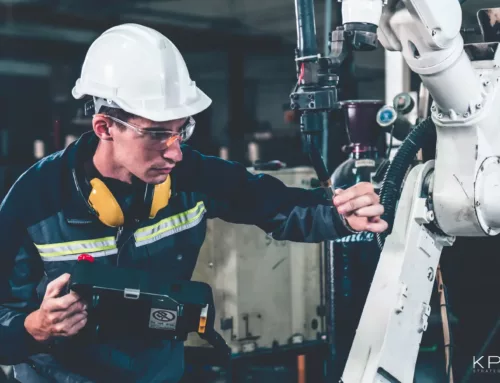Off-site meetings foster creativity, collaboration, and strategic planning within organizations. They provide a unique opportunity to escape from the daily routine and focus on essential discussions in a fresh and inspiring environment. To ensure the success of an off-site meeting, it’s vital to employ efficient strategies and methodologies – in addition to implementing project management software like KPI Fire. In this article, we delve into the process of preparing a productive off-site meeting, highlighting the integration of Lean tools and principles to improve the entire organizational strategy. With that said, definitions are due first.
What is a Strategic Off-Site Meeting?
A strategic off-site meeting is a gathering of a company’s leadership or key personnel held at a location outside of the usual workplace, typically for focused planning, brainstorming, decision-making, or team-building activities. These meetings change the environment and remove participants from everyday routines, allowing them to concentrate on critical strategic matters without distractions. Strategic off-site conferences set goals, develop long-term plans, address challenges, align teams, and foster participant collaboration. They can range from a one-day workshop to multi-day retreats and intend to facilitate strategic thinking and problem-solving in a dedicated and conducive setting.
When Should a Strategy Off-Site Meeting be Held?
A strategy off-site meeting must happen at strategic intervals or when specific situations or needs arise within a company. The timing of a strategy off-site meeting should align with the particular objectives you aim to achieve. It’s important to plan these meetings well, ensure critical stakeholders are available, and select an appropriate location that fosters productivity and creativity.
Defining Agenda & Objectives for an Off-Site Meeting
The foundation of any successful off-site meeting lies in setting clear objectives and developing a structured agenda. This process begins by identifying the primary goals of the meeting, whether it’s brainstorming, decision-making, or team-building. Employ Lean Six Sigma principles by eliminating unnecessary components from the agenda and focusing solely on what adds value to the meeting’s purpose. This ensures that every minute spent during the off-site is meaningful and aligned with organizational objectives.
Selecting an Appropriate Venue
The choice of venue can significantly impact the effectiveness of the off-site meeting. Lean Six Sigma emphasizes efficiency and waste reduction. Therefore, select a location that offers the necessary facilities and resources without excess frills. Additionally, consider the proximity to the workplace, travel convenience, and the availability of breakout spaces for focused discussions. Since COVID, even if you can’t get everyone together, creating a “place & time” for the strategy discussion is considered a best practice.
Preparing Materials and Technology
Before the off-site meeting:
- Gather and organize all the materials required for presentations, discussions, and activities.
- Leverage Lean Six Sigma’s emphasis on standardization to ensure that materials are consistent and easily accessible for all participants.
- In line with continuous improvement, use feedback from previous off-site meetings to refine the presentation format and content.
- Engage your team or other staff in generating Improvement ideas and accomplishing modifications from past preparations.
Fostering Collaboration and Innovation
During the off-site meeting, encourage collaboration and innovation among participants. Incorporate interactive activities, group discussions, and problem-solving sessions that spark ideas. Incorporate continuous improvement by including a session dedicated to analyzing past meeting outcomes and identifying areas for enhancement. By involving team members in refining the off-site experience, you create a culture of ongoing improvement and a space to capture new and innovative ideas.
Improving Overall Strategic Effectiveness
Off-site meetings offer a unique opportunity to revamp and enhance an organization’s strategy. Start by leveraging the insights and expertise of key stakeholders present at the meeting. Encourage open dialogue, where diverse perspectives are shared and debated. This inclusivity can lead to discovering new avenues and potential adjustments to the current strategy.
Building on the principles of continuous improvement, capturing and sharing ideas effectively can inform a more adaptable strategy that aligns with the organization’s evolving goals and market dynamics. In this sense, eliminating waste is always a good idea – and you can use this reminder of the 8 Wastes to prompt strategic ideas.
The Integration of Lean Principles
Preparing an off-site meeting that integrates Lean and continuous improvement methodologies requires careful planning, efficient execution, and a commitment to ongoing enhancement. By focusing on objectives, efficient use of resources, collaboration, and iterative improvement, organizations can maximize the value of their off-site meetings, driving innovation, growth, and organizational success. Through these efforts, every off-site becomes an opportunity for teams to collaborate, learn, and elevate their performance.
Moreover, integrating Lean Six Sigma principles into the off-site meeting preparation process and strategy improvement enhances the efficiency and effectiveness of the endeavor. Apply Lean principles by eliminating unnecessary components from the meeting agenda and focusing only on what adds value to the strategic discussions. Be sure to identify wasteful practices in the existing strategy and streamline processes by approaching the following core questions:
- How can we improve value to our customers?
- How can we reduce waste?
- Where can we reduce variation?
- How might we minimize employee overburden?
Continuously Improve With Our Latest News & Updates
How to manage Ideas gathered from Strategic Offsite Meetings
KPI Fire enables project and team leaders to streamline tasks and ensure seamless collaboration. In this context of lean strategy, KPI Fire gathers relevant data and metrics to evaluate the success of past methods and the potential impact of proposed changes. This data-driven approach ensures that strategy improvements are based on quantifiable insights and are more likely to succeed.
By intertwining these methodologies and standout project management software, organizations can prepare for off-site meetings that enhance strategy and drive overall excellence. Below, we discuss how project management software like KPI Fire can significantly contribute to managing ideas gathered from a strategic off-site meeting. In this regard, use the KPI Fire mobile app for easy Idea Capture and exchange among team members.
Centralized Planning and Task Management
Team members can collaborate on task lists, set deadlines, share ideas, and monitor their responsibilities, promoting accountability and a well-organized approach.
Collaboration & Exchange
Off-site meeting preparation often involves coordination among various team members, sometimes in different locations. Project management software offers real-time collaboration features like document sharing, commenting, and instant messaging. This enables teams to collaborate seamlessly, regardless of physical location, to create and refine meeting materials, presentations, and agendas. In this regard, share strategic themes and goals with participants to solicit ideas around a specific topic. Here is an example of how you can do this with KPI Fire.
Resource Allocation and Budgeting
Project management software helps allocate resources and manage budgets for off-site meetings. It allows teams to allocate funds for travel, accommodations, venue rentals, and other expenses associated with the arrangement. By having a clear overview of budget allocations and tracking expenses in real-time, project managers can ensure that costs remain within the allocated limits.
Document and File Management
Participants in off-site meetings often need to share various documents, presentations, and materials. Project management software provides a secure repository for storing and sharing these files. Attendees can access relevant documents, presentations, and resources, ensuring everyone is on the same page. Using an Idea Funnel to evaluate & prioritize ideas is another essential element of efficient document and file management. As an important strategic initiative, idea funnels help to capture and manage thoughts on the go and off-site.
Communication & Notifications
Effective communication is critical to successful off-site meeting preparation. Project management software like KPI Fire allows teams to communicate through dedicated channels, ensuring that essential updates, changes, and reminders are shared promptly. KPI Fire can set up automated notifications and reminders to inform team members about upcoming deadlines, tasks, and milestones.
Timeline and Gantt Charts
Visualizing the timeline and progress of off-site meeting preparation is essential. KPI Fire includes charts or timeline features that display tasks and their interdependencies. Project managers use this visual representation to ensure they complete every task promptly and that the overall preparation process stays on track.
Post-Meeting Action Items
Project management software also aids in managing post-meeting action items. After the off-site meeting, teams can use the software to assign follow-up tasks, track their completion, and monitor the implementation of decisions made during the session. This ensures that the outcomes of the off-site meeting translate into tangible actions and results.
What Happens After the Off-Site Meeting?
Just as Lean Six Sigma emphasizes measurement and analysis, team leaders must conduct a post-meeting evaluation to assess the effectiveness of the off-site. Gather participant feedback regarding the meeting’s structure, content, and overall impact. Identify strengths and areas for improvement, aligning with continuous improvement principles. Based on this feedback, establish action items and a timeline for implementing changes in future off-site meetings.
Streamline Your Team to the Winning Line
In addition to initial planning, – project management software streamlines the off-site meeting preparation process by providing centralized planning, collaboration, resource management, and communication tools. By leveraging these features, teams can enhance efficiency, ensure thorough preparation, and contribute to the overall success of the off-site meeting.
The leader’s job is to say “Yes” to the few & “wait” to the many.




